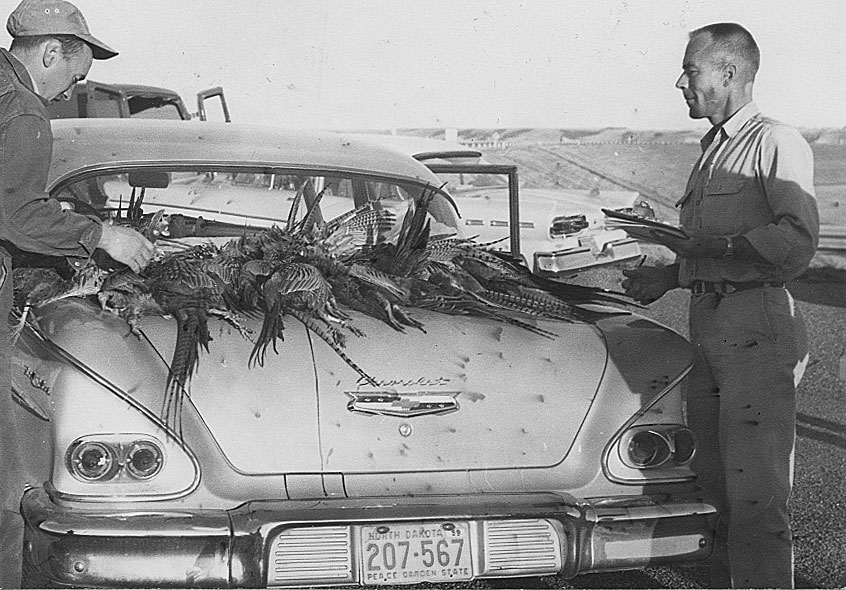A Look Back

There is some debate about the history of the Game and Fish Department’s practice of conducting field checks for upland birds and other game.
Biologists, retired and not, say the Department ended the practice sometime in the 1980s or sometime in the 1990s.
What’s certain is that they were carried out the opening weekend or the first week of every fall hunting season for years. As the provided black and white photograph indicates, biologists were taking to the field checking pheasants and other game as early as 1959, and likely earlier.
“Field checks are operated in one of two ways; either they are stationary or mobile. A stationary field check is designed to bring hunters to it … A mobile field check is one where biologists actually go out and seek hunters to check,” according to the November 1973 issue of North Dakota OUTDOORS. “Both types work effectively in the collection of pertinent information such as age and sex ratio of the various species and hunter success.”
Jerry Kobriger, retired Department upland game management supervisor, said that while the photograph provided was before his starting time with Game and Fish, he said he worked many stationary and mobile check stations for both upland and big game species.
“The upland game people in the Department enjoyed them because we got out into the field and got to talk to the public,” Kobriger said. “It was good public relations for the Department.”
But like a lot of things, game management practices evolved and field checks were eventually discontinued.
“They just gradually petered out,” Kobriger said. “The last couple I was on was for turkeys … we were collecting blood samples for disease work.”
Today, to help in the effort to manage the state’s upland game birds, biologists lean to a degree on feathers collected from harvested birds that are sent in by hunters in wing envelopes.
The upland game wing survey has, like a lot of things, been in practice for decades.
While the field checks are a thing of the past, they once helped in the management of North Dakota’s wildlife.
“The data obtained from checking stations during the opening weekend of the pheasant season are only a small, but still important part, of the information acquired annually to keep tabs on our pheasant populations,” according to the November 1960 issue of OUTDOORS. “A continual effort is being made to learn more about our pheasants so that they can be managed to provide maximum recreation for the sportsman.”
